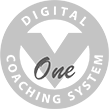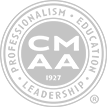The Business Side of Golf Part II: Managing Courses for Profit

By Donna White, Keiser University College of Golf Professor – PGA and LPGA Member
Winner of Three LPGA Tour Events
Cost Management Strategies
Pricing strategies involve identifying and/or reducing operational costs to provide a service or product without compromising the customer experience. Gross revenues significantly influence the spending capacity of a golf course, thus the net income and profit. Labor and golf course maintenance are the largest expenses for a golf course.
Labor Costs
A golf course’s payroll costs, compared to the overall operating budget, are as low as 25%, running up to 56%. According to Dan Vanslette, CEO of FairwayIQ managing labor costs requires defining clear golf course and facility maintenance standards, monitoring expenses of all departments, and being diligent in revenue projections and budget preparation. Impacted by minimum wage increases and a surge in benefit costs, many courses have implemented strategies to downsize staff, change employee status from full-time to part-time, and raise prices to cover costs.
Ironically, while the golf industry is on an upswing, it is facing a labor shortage. Eliminating overtime, “wheeling” employee roles to work in multiple positions, and outsourcing aspects of the operations to third-party management companies or concessionaires to maximize revenues.
Golf Course and Facility Maintenance
The condition of a golf course is the number one reason people select one course over another according to a survey conducted by Golf Convergence Inc. Golf course maintenance is expensive but critical for retaining and attracting members and golfers. According to the Golf Course Superintendent Association of America, the costs to maintain a golf course can range from $500,000 for a daily fee to multiple million for a platinum facility.
Golf course maintenance budgets are predicated on ownership, facility mission, amenities, and available revenue streams. USGA agronomist Adam Moeller suggests that clubs seek cost-effective strategies to analyze water and chemical costs, incorporate organic and environmental sustainability practices, ensure preventative maintenance of golf course equipment, and consider riding green mowers versus walking. Even reducing the number of bunkers on a course can reduce maintenance man-hours. Many golf courses outsource all or parts of the golf course maintenance to a third-party turf maintenance company.
As previously stated, golf course conditions are the number one reason golfers select one course over another. Maintenance of the clubhouse and amenities impact profitability. Maximize revenue opportunities by enhancing the golfer experience without demising the golf course’s condition. Consider the return on investment of an updated clubhouse and practice areas, a golf shop with modern displays and merchandise, an appealing menu and food and beverage options, and an infusion of modern technology.
Marketing and Branding
Every golf course is different. The local market analysis verifies the club’s market position, differentiations, and any competitive advantages. Legendary Marketing believes the development of a marketing plan centered on a single difference or uniqueness of a facility, a unique selling proposition statement (USP) essential in raising awareness, brand recognition, and reputation. Lead generation and conversion resulting from effective marketing boosts profitability potential.
Inbound marketing strategies are those in which people find you are cost-effective. Starting with the course’s website, digital marketing tools such as social media, booking platforms, search engine optimization, and cost-per-click online advertising. Post blogs, golf tips, and promotions to keep current golfers and members engaged and attract new customers.
Consulting firm GGA proposes campaigns that are designed to address the needs and wants of specific market segments including existing or potential customers by inviting them to play, join the course, and to participate in events. Consider revenue-generating entities outside the club such as corporate memberships or partnerships, charities, wedding planners, tourism boards, chambers of commerce, etc.
Customer Experience
McKinsey and Company found positive customer experiences increase sales potential by 2-7%, directly increasing profitability by 1-2%. This starts with employee training. Service received at every customer touch point of the golf course operation influences customer acquisition, retention, and loyalty. A golf course with superior customer service and perceived value can charge higher fees. Satisfied customers are also less likely to complain, reducing customer service costs.
Technology
By embracing technology, golf courses can improve operational efficiencies, increase revenue, and reduce costs. Data-driven systems include tee time reservation platforms, customer relationship management, point of sales and inventory management, and global positioning systems on golf carts, all of which enhance the customer experience. By easily tracking and monitoring financial benchmarks, golf course managers can make well-informed decisions.
Self-driving mowers and range pickers, drones, geo-mapping, weather stations, automated irrigation, wireless soil sensors, and water conservation tools are being used in many courses. The Golf Course Superintendents Association predicts a cost savings of 25% in labor costs as more automation becomes available. When speaking about golf course technology reliance, Brian Verdugo, CEO of iGolf believes “everyone should feel optimistic and excited for what’s in store.”
In summary, managing a profitable golf course in the increasingly competitive U.S. golf market requires a comprehensive strategic approach. A course can thrive by implementing a plan that includes short-term and long-term pricing, cost management, marketing, customer service, technology integration, and facility maintenance strategies and practices. These strategies provide a framework for golf courses to manage budgets, adapt to customer preferences, and generate revenue while containing costs. A position leading to long-term financial success and profitability.
Learn more!
Want more tips? If you want to take your game to the next level, contact our team at Keiser University’s College of Golf & Sport Management today. With our dedication and experience, we can elevate your game to new heights together. Give us a call today at 888-355-4465.














